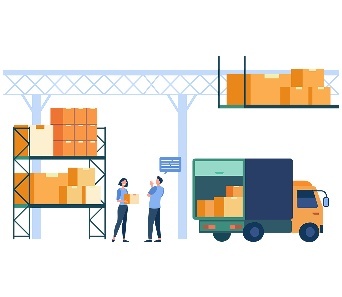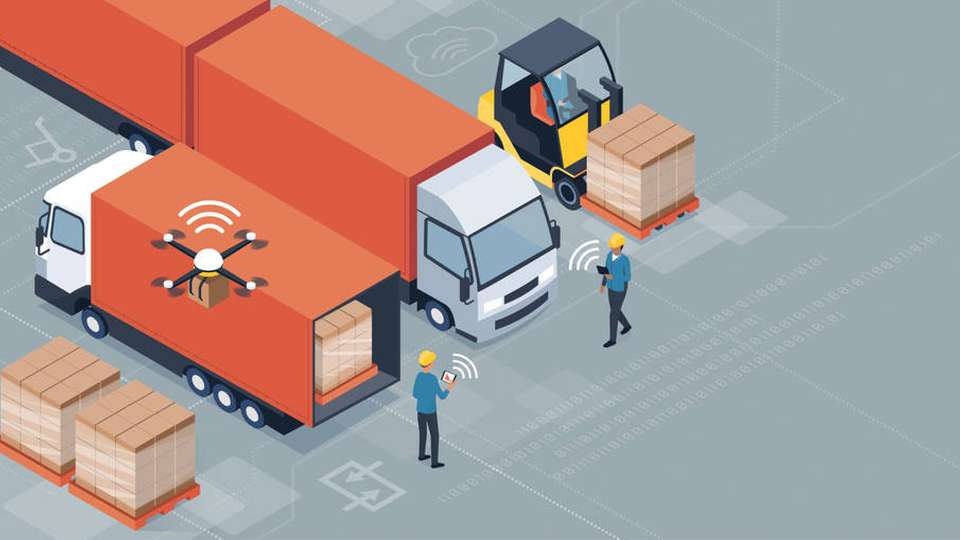For many sectors, these problems are only getting worse, as companies struggle to manage prices, inventory gluts and back-orders. For example, last quarter alone Ford Motor Company updated its public guidance with an additional $1B in costs related to unforeseen supply chain difficulties. Across the United States, equipment and vehicle manufacturers are filling up vacant parking lots with assemblies that are being “built shy” (e.g. shy of a few parts) and will have to either re-enter the assembly line for a custom production run or be completed manually. Needless to say, the production methods of discrete manufacturing which are built to run linear, highly controlled processes with great precision are not easily adapted for this reality.
“Never let a good crisis go to waste.”
The quote by Rahm Emmanuel (often falsely attributed to Winston Churchill), concludes with the explanation that a crisis simply offers the opportunity to do things that could not be done before. For entrepreneurs considering bringing forth solutions – whether vertical or horizontal – there is a tremendous appetite and excitement around new ways of doing business for the supply chain.

In the supply chain profession, the technology opportunities are myriad. For example, most data regarding price and quantity transmitted between suppliers and buyers takes the form of Adobe PDF attachments or Microsoft Excel files, plus Electronic Data Interchange (EDI). A recent study by the supplier data company Tealbook found that three out of five procurement leaders are still hand-typing supplier data or relying on master data that was keyed into a system of record by hand. And the error-rate in orders routinely impacts a double-digit percentage of the items, leading to a series of time-consuming and manual revisions to purchase orders and invoices. Given the supply chain technology stack, it’s little wonder that companies are challenged to get the parts and materials they need to show up at the right loading dock on time in full.
This old world technology stack for a critical business function is at odds with the priority level that CEOs and CFOs around the world are putting on inflation as a business driver. A recent study by PwC found that 62% of CEOs surveyed view digital transformation as a key lever in their business managing inflation. With so much of the costs associated with a supply chain hardly visible except in hindsight, it’s not difficult to see why this might be the case.
Where entrepreneurs around the world are gaining traction
Recently I attended a symposium in Bentonville around supply chain innovation and was wowed by the diversity of approaches. Whether it’s re-thinking last mile logistics through electrification, warehouse robots for picking and boxing items for retail or intelligently assembling pallets for loading and unloading trucks, the entire supply chain is undergoing a mass re-thinking and re-imagining.
Generally speaking, the three largest drivers of this re-thinking are around the following:
Sensorization of physical spaces and equipment, often known as IoT (Internet of Things), enabling the tracking and monitoring of assets from shipping containers to individual packages, plus live video feeds with AI monitoring to recognize and flag patterns that might trigger helpful interventions earlier and more frequently. These control systems are also enabling a re-orientation of the layout of warehouses, shipping terminals and distribution and fulfillment centers as well as the breaking up distribution models to provide additional capacity for direct-to-consumer delivery that competes with Amazon’s two-day delivery.
Vehicles ranging from trucks to people movers to cars to tractors are becoming both electric and autonomous, leading to the entire vehicle supply chain to be re-thought and the vehicles themselves to become understood as software platforms. Tesla has led the way in a wholesale re-imaging of a vehicle that can be remotely updated with software that can provide new capabilities and offer new benefits in a manner similar to the iPhone’s software updates. As this model enables the continuous improvement of the adaptive intelligence systems that underpin self-driving capabilities (alongside potentially the self-directed movement of humanoid factory robots), this promises to be a fruitful area of innovation across the supply chain.
As the reliance on obsolete data infrastructure often creates some of the most frustrating silos and bottlenecks in the supply chain, the new infrastructure that enables cross-chain and cross-process comparisons to be made in real time has the potential to offer predictive decision making with real business impact. Since timing is often the most salient factor in a supply chain performance – whether it’s processing a payment, locking in trucking capacity or placing an order for scarce allocation of materials – the ability to make more decisions faster (or even to transform a single-threaded process into one with parallel processing capacity) offers a tantalizing opportunity for innovators. As we are seeing, this predictive revolution will impact nearly every area of the supply chain, ranging from the upstream strategic sourcing and procurement all the way to production planning.
Entrepreneurs: Spend Time and Stay Curious About Procurement and Supply Chain Teams
One of the ways I have seen entrepreneurs becoming successful is having deep, personal knowledge of the problem that they want their technology to solve. However, for many founders, the problems of supply chain and procurement may seem esoteric, administrative and complex. The solution is simple: spending time observing and becoming intimate with the evolving business processes and teams in procurement and supply chain will offer opportunities to experiment with novel approaches enabled by larger shifts in the technology landscape.
Entrepreneur and YC advisor Paul Graham famously proclaimed: “do things that don’t scale”, especially referring to the way that founders manually recruit users, perform consulting projects and go through other heroics to get their solutions tested and out into the field. Stripe founders manually installed the solution by sitting down at the laptops of e-commerce users. Airbnb founders went door to door in New York signing people up for the marketplace. Today these companies seem so large and ubiquitous that it is hard to remember that without these efforts they likely would never have gotten off the ground.

At Arkestro, we found ways to predict and validate millions of prices for procurement teams in our early days by approaching large enterprises that were struggling with backlogs in their procurement workstream and simply asking: “Can we help deliver the same outcome you already like but just in fewer steps?” For companies that were taking weeks or months to source and compare quotes for thousands of items, Arkestro’s predictive procurement orchestration made a world of difference in their supplier relationships. But it was only by listening to these early customers that we could make improvements and understand that the correct deployment of this technology was not an app but rather an embedded platform that lives inside Coupa, Ariba, SAP, Oracle and other systems that our customers were already using. That was a learning we also got by listening not just to our customers but our customers’ suppliers, who didn’t want to deal with another app.
This epiphany around building an ‘embedded platform’ has been a massive value-add to Arkestro’s entire ecosystem, and has enabled us to really be laser-focused on improving the quality of our predictive models for pricing, supplier selection and allocation splits. Despite our team’s experience in the space, we would never have realized this opportunity if not for close collaboration with our customers. For entrepreneurs considering building solutions for procurement and supply chain teams, my recommendation is to spend the extra time getting to know the problem, testing out your solution and proving out the narrowest use case possible. Due to the supply chain crisis, the level of urgency is high enough that you may find a group of enthusiasts willing to try out your solution in the real world much earlier than you might think.